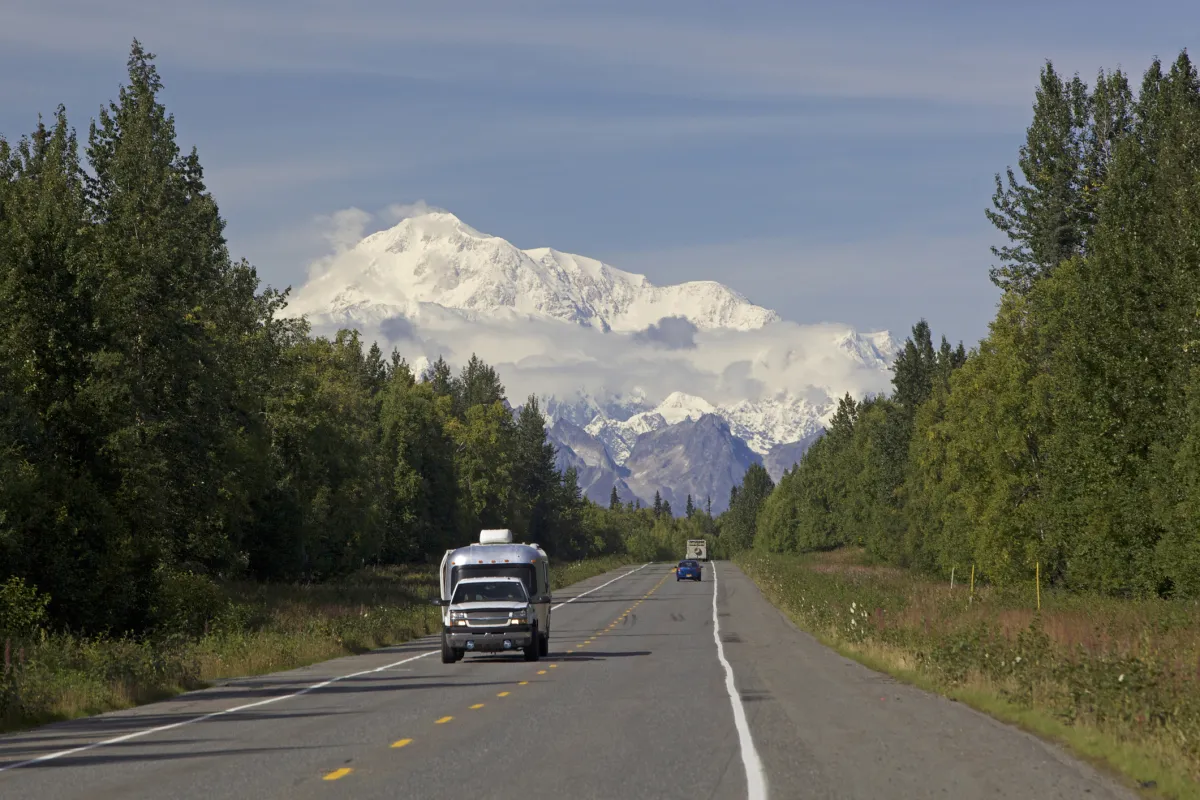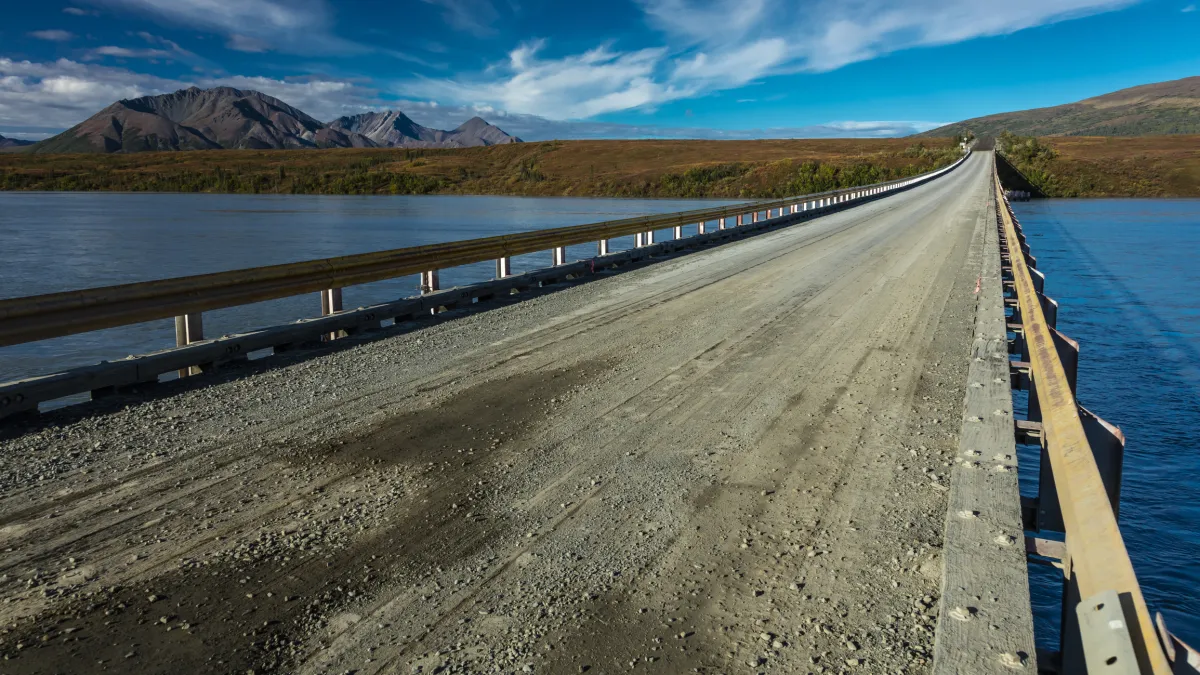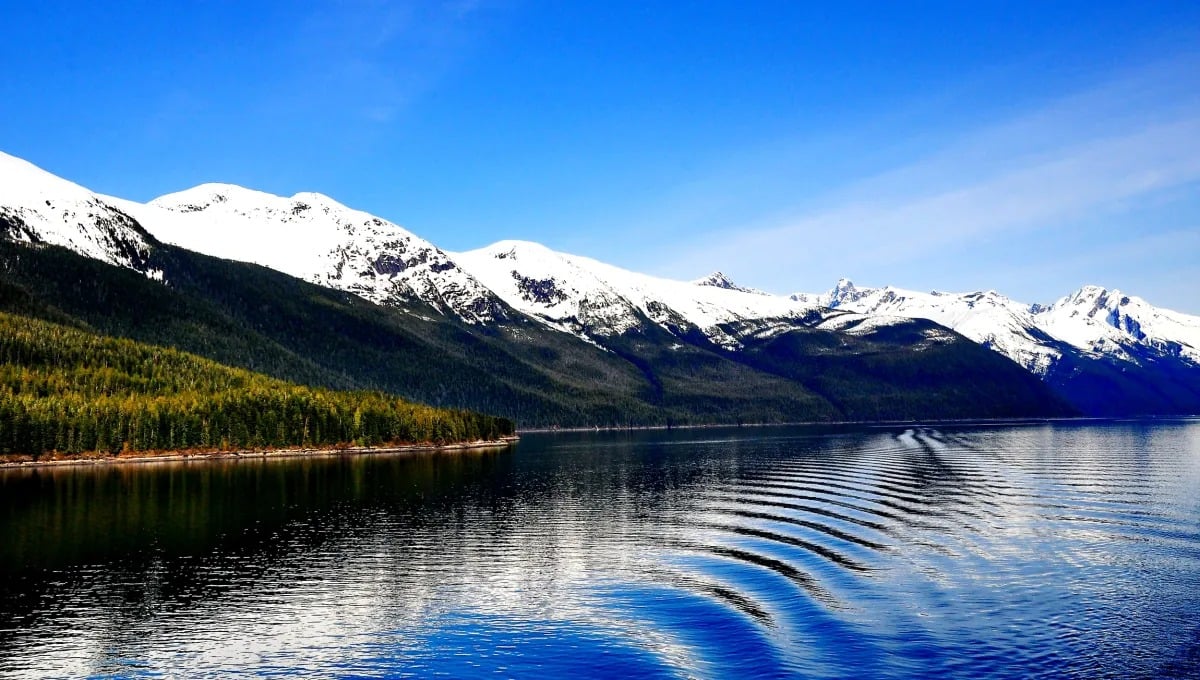
Driving the Denali Highway is a favorite road trip amongst Alaskans. Traversing through Alaska's heart from Paxson to Cantwell, this remote road offers the chance to explore Alaska’s backcountry from the comfort of your own car.
Due to its remote nature, the Denali Highway is mostly a gravel and dirt road, stretching across wild tundra. There are few services along the way and you’ll need an approved vehicle to make the trek. In this guide, we will cover the basics of driving the Denali Highway, from what to expect to where to stay.
About the Denali Highway

The Denali Highway was once the primary route to Denali National Park before the Parks Highway opened in 1971. Today, it stands as a 135-mile stretch, primarily gravel, harkening back to Alaska's earlier days. While the road is well-maintained, its mostly gravel surface presents a unique driving experience, reflecting the ruggedness of the Alaskan wilderness.
This route links the Richardson Highway at Paxson to Cantwell on the Parks Highway, serving as a gateway to Denali National Park, and the highway is only open in summer. Travelers can expect for a minimum 4.5-hour one-way drive, with limited services.
Driving the Denali Highway

Navigating the Denali Highway demands attention and care. The gravel road dictates moderate speeds (35-55 mph), varying with surface conditions. It's closed from October through mid-May due to winter conditions. Due to the nature of the road, most rental companies do not permit you to drive on the road. You will need to either rent a car from an approved vendor or bring your own vehicle.
In Anchorage, you can rent from providers like Alaska 4x4 Rentals, Alaska Overlander, or Alaska Auto Rentals, who specialize in rentals specially for the Dalton and Denali Highways.
Accommodations and Camping
While it's possible to drive the highway in a day, an overnight stay is recommended to fully immerse in the experience. Lodging is limited along the road and will almost always require a reservation, especially in August when the road becomes a hotspot for hunters. Alternatively, you can also camp for free anywhere along the road, including on one of the numerous pull-outs if you are traveling in an RV or have a tent.
Here’s a list of lodges available along the road:
- Denali Highway Cabins at Paxson: Located at the start of the highway, these cabins offer a comfortable stay with the essentials, perfect for beginning or ending your journey.
- Tangle Lakes Lodge at Milepost 22: A cozy retreat near the scenic Tangle Lakes, ideal for those seeking both comfort and access to some of the best trout fishing in the state.
- Maclaren River Lodge at Milepost 42: This lodge provides not just accommodation but also a chance to explore the nearby Maclaren River, popular for its scenic beauty and fishing opportunities.
- Alpine Creek Lodge at Milepost 68: Situated in the heart of the wilderness, it's a great spot for those looking to delve deeper into Alaska's natural landscapes.
- Clearwater Mountain Lodge at Milepost 82: Offering stunning views of the surrounding mountains, this lodge is a peaceful haven for travelers.
Highlights of the Road
Wildlife and Scenery
The highway is a haven for wildlife enthusiasts. Expect to see a variety of animals, especially at dawn and dusk. The open tundra offers unobstructed views, making wildlife spotting and photography an extraordinary experience. Caribou, bears, moose, wolves, and lynx are all found along the road, as well as a wide variety of migratory birds, birds of prey, and smaller mammals.
To increase your chances of seeing wildlife, plan to drive the road in June or July, before the August hunting season. Hunters around the state head to the Denali Highway for its easy access to excellent hunting areas, leading to many animals being scarce along the road during this month.
Tundra and Wildflowers
Most of the Denali Highway is above the treeline, creating endless horizons across the Alaskan tundra. These views are equally mesmerizing under the midnight sun, when the land is cast in gorgeous shades of red and oranges. The wildflower bloom, starting in late May and peaking with the vibrant fireweed in late July, adds a splash of color to the landscape and makes for some excellent photo opportunities.
Berry Picking and Fishing
August is perfect for picking high alpine blueberries, and you will have plenty of opportunity to find berries along the road. Fishing enthusiasts can look forward to lake trout and arctic grayling in the local water bodies, including around Tangle Lakes.
Cultural and Natural Landmarks
The highway is rich in history, with areas like the Tangle Lakes Archeological District revealing ancient indigenous subsistence patterns. The Maclaren Summit also offers excellent views, being the second highest highway pass in Alaska.
Stops Along the Way

- Tangle Lakes (Mile 20-23): This area offers a serene setting perfect for photography, especially of the lakes and distant mountains.
- Gulkana River Overlook (Mile 37): A must-visit for stunning river views and potential wildlife sightings.
- Maclaren River Viewpoint (Mile 42): The viewpoint offers a panoramic view of the Maclaren River Valley, ideal for sunset or sunrise photos.
- Alpine Creek Lodge Area (Mile 68): Surrounded by scenic vistas, this area is great for capturing the essence of the Alaskan wilderness.
- Susitna River (Mile 98): The Susitna River crossing provides a picturesque setting, with the river framed by mountains in the background.
Preparation Checklist
Before embarking on your Denali Highway adventure, ensure you are well-prepared for the adventure. Remember, even though this is listed as a “highway”, this road differs drastically from the highways you may be familiar with back home. Here's a checklist to help:
Vehicle Preparation
You will need a suitable vehicle for gravel roads (check with rental companies for cars authorized to drive on this road)
- Full-size spare tire and knowledge of how to change it
- Full fuel tank before starting the journey
Safety and Emergency
- First-aid kit
- Emergency food and water supplies
- Warm clothing and rain gear
- Emergency beacon device or satellite phone (there is very limited cell reception along the road, so have a back-up in place)
Navigation and Information
- Updated maps of the area
- Guidebooks or apps for wildlife and plant identification
- Information on local fishing regulations (if applicable) and a fishing license, if you plan on fishing
Tip: Check out the Milepost for a mile by mile guide of the road
Camping and Overnight Stays
- Camping gear if planning to camp
- Reservations for lodges (if opting for lodge stays)
Miscellaneous
- Camera and binoculars for wildlife and scenic photography
- Bear spray for wildlife encounters
- Sunscreen and insect repellent
- Extra layers and waterproof clothes
Remember, the Denali Highway is remote with limited services and connectivity. Plan accordingly and always inform someone about your travel itinerary. Don’t plan on driving faster than 40 mph for most of the trip, and come prepared with your spirit of adventure!

